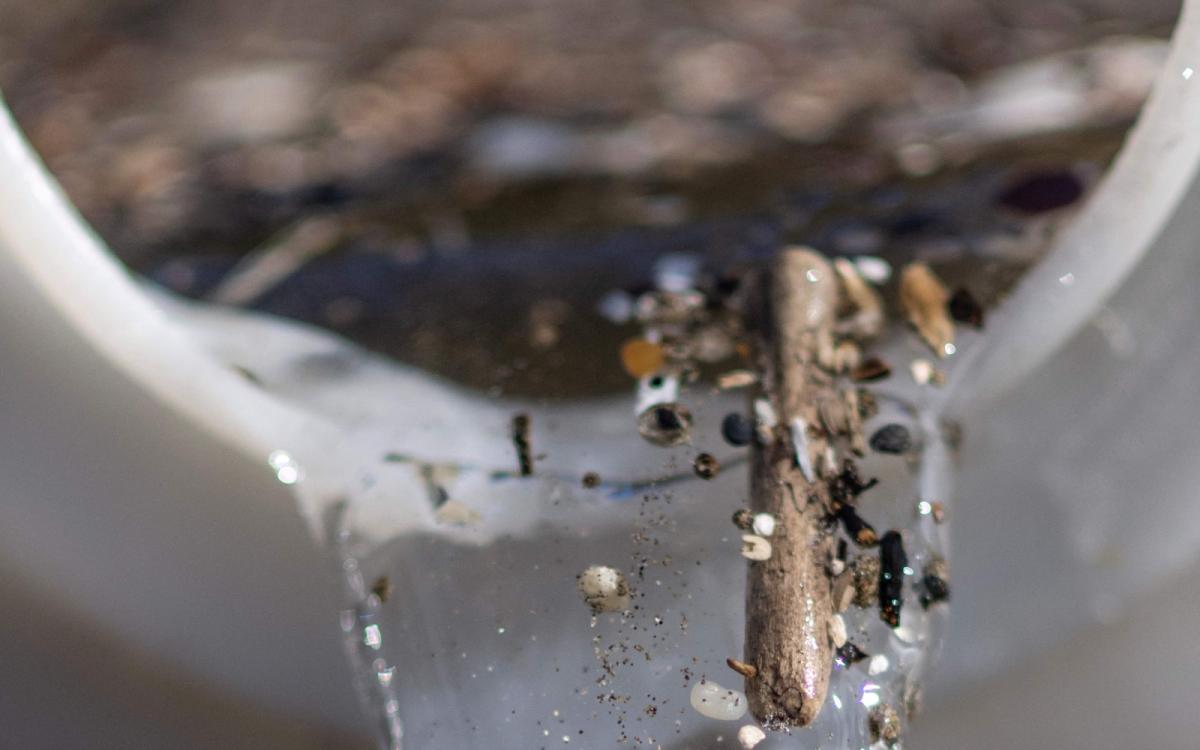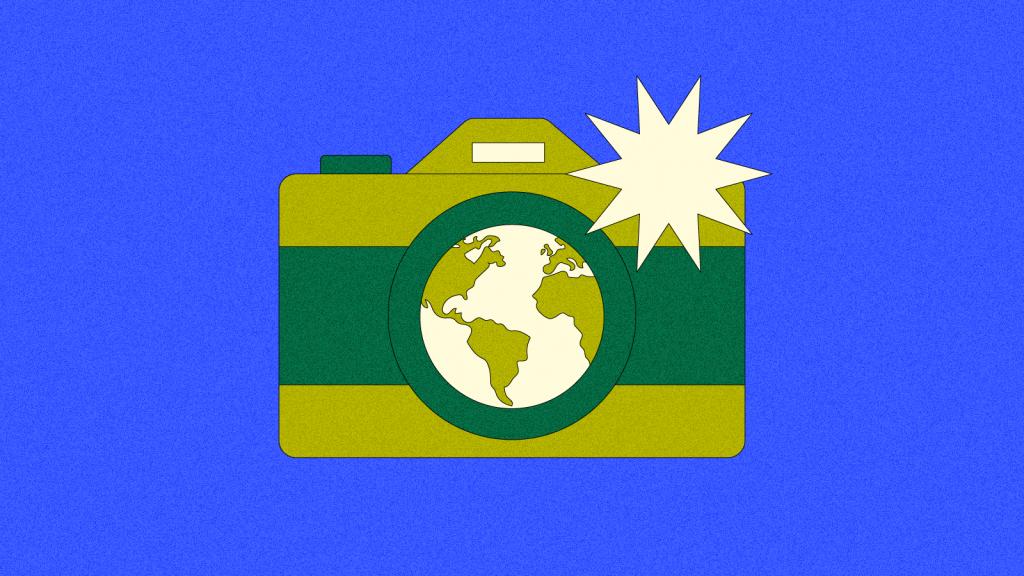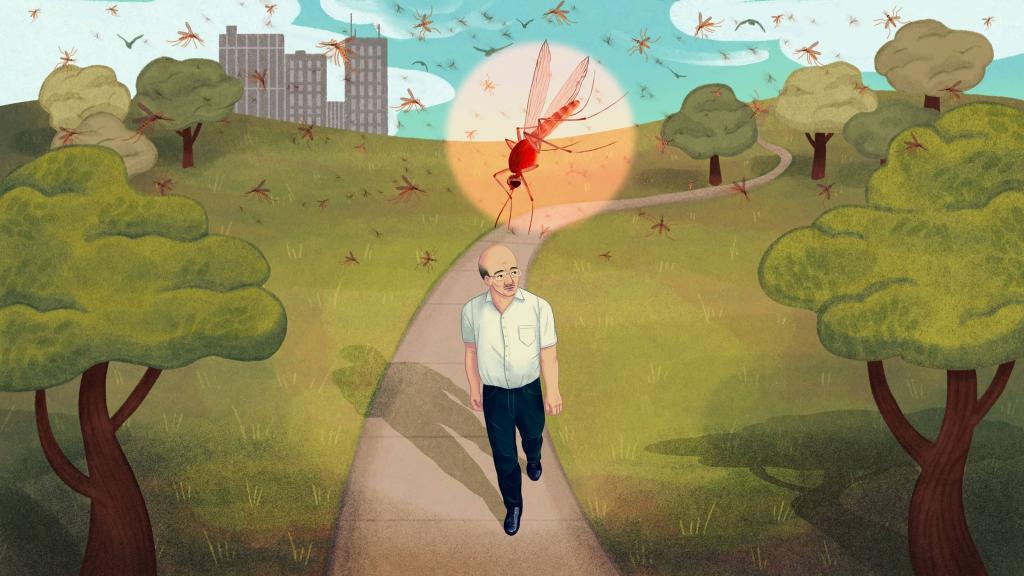
The vision
“I think science is the perfect way to solve this issue. Because a lot of innovation and invention happens in science, and technology is always changing. And so I think, if I really wanted to make a big impact, this would be the way to go.”
High schooler and science fair winner Victoria Ou
The spotlight
Last month, around 2,000 high school students from all over the world traveled to Los Angeles for the annual Regeneron International Science and Engineering Fair, or ISEF. Reading the list of winning projects is … well, intimidating, even for a 30-year-old who technically has a degree in science. The top prize (of $75,000 — this is not the science fair from your high school gym) went to Grace Sun for her project “Novel Chemical Doping Strategy to Enhance N-Type Organic Electrochemical Transistors.” Another top award went to a project titled “Solving Second-Order Cone Programs in Matrix Multiplication Time.”
This year’s entrants included several climate-related projects as well: an AI approach to wildfire detection; a palm tree-inspired prototype for disaster-resilient building; a new energy-smart approach to optimizing indoor temperatures.
Youth climate activists get a lot of attention. We see them taking to the streets, demanding action, and holding policymakers accountable, and we believe their passion could change the world. But looking at these ISEF projects, it struck me that we often overlook this very different form of youth leadership.
These are not kids being pushed into crazy science projects by strict parents or overzealous teachers. They want to change the world, too — through research and innovation. And talking to them just confirms that.
“I want to help make sure that future generations can still have the same planet that we live on — that they don’t have to constantly worry about their health just because of what we have done in the past,” said Victoria Ou, another of this year’s top winners.
Victoria and Justin Huang, two 17-year-olds from The Woodlands College Park High School in Texas, designed a system that filters microplastic particles out of water using ultrasound waves. Their project received the Gordon E. Moore Award for Positive Outcomes for Future Generations, which comes with a scholarship prize of $50,000.

Victoria and Justin pose with their award at ISEF. Society for Science / Lisa Fryklund
They’ve competed in science fairs before, starting in middle school. Justin notes that it’s a part of the culture in their school system — they both attend the Academy of Science and Technology within College Park High School. But this was their first time teaming up, and their first time going to ISEF. They’ve both been interested in environmental science for some time (Justin cites the Pixar movie WALL-E as an early influence) and constructed their device themselves, doing the research in their own homes.
In their experiments, the device they built was able to successfully trap up to 94 percent of the microplastic particles present in the system, letting clean water flow out the other side. They’re keen to continue working on the invention, refining the design and ultimately looking toward scaling it up. But in the meantime, they’re hopeful that their success can serve as an inspiration to other young scientists, or anyone wondering how they can make a difference on an issue as thorny as the microplastics crisis.
Talking to them was like talking to any passionate youngsters (if those youngsters used a lot of terminology you had to google on the side and also invented a device with the potential to change one of the biggest problems facing our planet). I spoke with them a couple weeks after their ISEF win about their project, their experiences at the science fair, and what they’ve learned along the way. Their responses have been edited and condensed for clarity.
![]()
Q. Do you want to start by telling me a little bit about yourselves, and your interest in science?
Victoria: OK, I can go first. I’m Victoria Ou, I’m a current junior — well, ongoing to senior, in high school. We’ve actually been in school together since elementary. So we had the same sixth-grade science teacher, and she was kind of our big inspiration for getting into science. She really showed a lot of passion for it. And she was the one who had us do a science project that was really similar to a science fair. For my project that year, I actually did plastic pollution, which is how this kind of all started. I first read about the Great Pacific Garbage Patch and microplastics that we’re getting into our water and our food. And I was like, This is definitely a huge problem.
Justin: Ms. Caldwell was really the first one who raised the issue about the environment, and how we have one Earth and what we’re doing to it is really not good. So moving forward into our future, we wanted to be able to help with this issue. That’s how we got involved with this environmental aspect of science. She was the big inspiration for both of us.
Q. I’m sure that must mean a lot to her. So tell me more about your research, and how you got started with this project.
Victoria: So, we know microplastics are a huge issue, right? They get into all of our food and water and produce a lot of harmful health issues. We were looking into some possible ways to filter them out of our water. And there are a lot of current methods that we were looking at, but they all have their own disadvantages. Some of them are too expensive or too slow to work. And some of them also added chemicals that could be harmful to our health, which we definitely don’t want.
We were thinking of a more noninvasive approach. And we came upon two main studies for this — the first showed how ultrasound could be used to get red blood cells within your bloodstream to clump together. And we thought, ”Oh, this is kind of a similar concept to microplastics in water.” So we kept digging a little more into that and found another study that showed how they could focus microplastics within the water. So you would have water flowing and the microplastics would gather into streams in the water. We used these two as a big inspiration for our own project.

Victoria and Justin hold up their invention in front of their booth at ISEF. While it looks a little like two pens taped together, it is not, in fact, two pens taped together. Why would you even think that. Society for Science / Chris Ayers Photography
Q: How exactly does your invention work (for a nonscience person)?
Victoria: So imagine you have your tube, and water’s flowing this way. We have a transducer [Editor’s note: That’s a device that converts energy into something else] attached to one section of the tube that’s producing ultrasound. So as water is going this way, the ultrasound produces a force that pushes microplastics back the opposite way, but the water is still able to get through. So at the end we have water coming out, but the microplastics, they all kind of get stuck in the upper half of the tube, and that’s where they eventually accumulate. And we can clean them out afterwards.
Justin: You can think of it as invisible filtration — because you can’t really see the sound waves. But the microplastics are still getting blocked within the system, within the tube itself.
One of the things that we thought of here was, if we’re looking at physical filters, they’re really easy to get clogged. We wanted to make sure we didn’t have the same problem. In our experimentation, we did tests with high concentrations of microplastics, like, thousands of times higher than what we would see in real life, as well as really high volumes of water. And our system was still able to work really well. In the end, the microplastics are clumped together in the entry part of the tube — and we would have to clean it out eventually, but it doesn’t really run into any of the problems that physical filters do.
Q. What was it like testing your device? How did you build the experiment?
Justin: So first, to create the system — there’s actually equipment out there to generate ultrasound, but it’s really expensive.
Victoria: We found that there are three main components, which are the signal generator [Ed: an electronic device that produces electrical signals, or currents], power amplifier [Ed: does what it sounds like], and piezoelectric transducers [Ed: basically, converting electricity into vibrations].
So the signal generator and power amplifier we were able to borrow from Electronics and Innovation [Ed. an equipment manufacturer in New York]. They were actually really generous because we emailed them, we were like, “Hey, could we maybe rent this for this amount of money?” But once they heard we were high school students trying to do research, they were like, “Actually, we can give you this old model for free.” And we were super blown away, definitely could not have done it without them. Once we had the signal generator and power amplifier, we could produce the electrical impulses needed for our transducers to convert into ultrasound.
Justin: How we collected our data was we had microplastic samples that we created, whether that be shavings of objects around the house that were plastic, or cutting up plastic straws or that kind of stuff. And then we would put it in water and then we would have a syringe pump that we could slowly push the water through. That’s how we tested the system. We collected the water at the end, and then we did some analysis to see how much we filtered.
Q. How do you envision your device being used in the real world?
Victoria: We were thinking of two main applications for our device. One would be in water-treatment plants, since that directly impacts us and the water we use. And we were also, based on previous studies in the field, thinking of using this for laundry machines, to clean up the synthetic textile particles that come out of the laundry machines. Because they actually contribute to around 35 percent of primary microplastics pollution. So being able to clean up the laundry water before it goes back into the environment would help a lot, since we cut them off at the source instead of having to continuously clean them up from the environment.
Q. What do you feel like you learned going through the process of inventing this device and then taking it to ISEF?
Justin: Definitely something that I would’ve liked to hear when I was back in eighth grade doing science fair for the first time, is to always stay curious. Because you never know if something that you’re going to learn now is going to be useful in the future. I remember when I was in fifth grade, I built some LED lights with my grandpa — and that engineering skill really translated over to actually building the system here. So just stay curious and don’t give up.
Victoria: I guess on that note, I could also add to not be afraid of failure. When I went to ISEF, I was actually super intimidated by everyone else. I’d talk to a person, they’re like, “Oh, I’m going to Harvard, I’m going to MIT,” and I was like, “Oh my gosh, how could I ever measure up to these people? They’ve probably been successful their whole lives.” And I think having gone through the whole ISEF process, I just never realized that they put in a lot of hard work, too. Everything you see is only just the surface, right? You don’t see all the late nights, hundreds of hours of hard work that everyone puts in, and you don’t see the parts where they fail, either. Because no one ever wants to talk about that. But I think going through failure at some point is super important, because we failed a lot of times throughout our project, and each time it helped us learn something that could help us achieve the next step of being able to reach our goal. So I think just don’t give up, and learn from your mistakes, but keep going.
Q. On the note of never giving up — does doing this work make you feel more hopeful about our future, and more empowered to act on big issues like pollution and the climate crisis?
Justin: Yeah, definitely. You always see these things on the internet or on TV about how so-and-so invented whatever, to cure some disease or to solve some environmental issue. It’s really surreal being the ones who were able to create this, because we thought it took like, decades and decades of research. And of course it does, and what we have is just kind of a small step in our journey. But being able to see how just two high schoolers, from their own home, without even a lab, could make a difference in the world — I feel like that was truly something that inspired us, that can inspire us to go even further in the future.
Victoria: For me, going to ISEF was already super fun and I think that was fulfilling enough. And for other people, they don’t necessarily have to feel like you have to win an award or do something super famous to make a difference. I volunteer with our township sometimes to clean up trash. And every time I do that, I still feel almost as fulfilled as standing on that stage, you know? So I think just seeing the little things in life also is super fulfilling, and seeing how you can help the people next to you.
— Claire Elise Thompson
More exposure
- Read: more about Justin and Victoria and their award-winning project (Fox 26 Houston)
- Read: recent Grist coverage on the ubiquity of microplastics and their effects on human health
- Read: about the advantages and drawbacks of bioplastic alternatives (BBC)
- Read: a few tips on how to avoid consuming microplastics as much as possible (Wirecutter)
A parting shot
In the U.K., environmental artist and activist Rob Arnold invented a filtration device (pictured here) that separates bits of plastic from sand and other natural detritus, using a filtering system that involves water flotation. He and other volunteers use the machine on beach cleanups to collect “nurdles,” tiny plastic pellets that are used to manufacture a range of plastic materials, but often end up as waste themselves.




